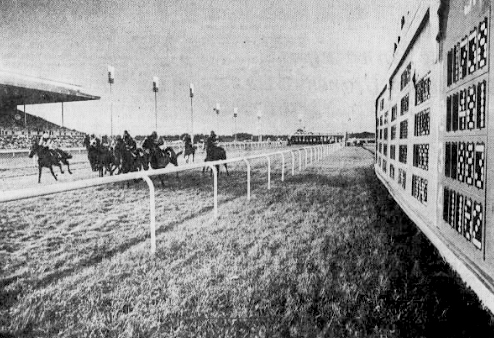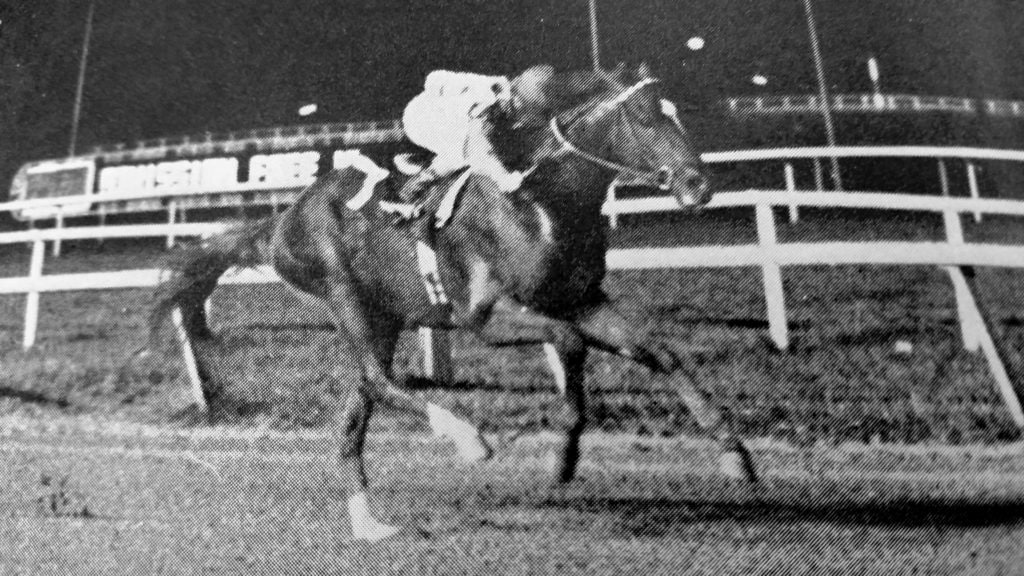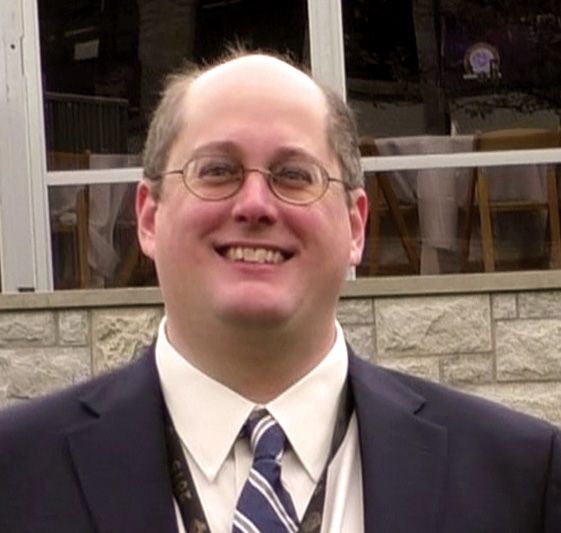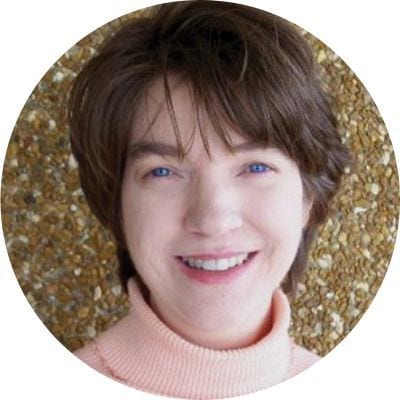The time when the lights were turned on, and then off, at Arlington Park
)
Night racing at Arlington Park in August 1969 (Chicago Tribune photo)
When the numbers don't lie, businesses start to get creative.
Fifty years ago in the summer of 1969, the numbers at Arlington Park outside Chicago weren't lying. Attendance, and thus handle in the days before off-track betting, was off noticeably from the 1968 meet, and Arlington's executive vice president Marje Everett was determined to do something about it.
Her solution to stem the losses was to showcase the sport at one of the country's most important tracks in a new light. Or in this case, under them.
"I remember the voices of doom about night baseball. When you look back on it, night baseball saved baseball," Everett said to Sports Illustrated. "The way racing is going now, Thoroughbred racing is catering to the unemployed while harness racing is catering to the employed. What the devil is so wrong with night racing?"
Night racing of the Thoroughbred variety was hardly a new concept. A number of minor tracks throughout the country, including two in downstate Illinois, were conducting their meets in the evenings. However, no track of Arlington's stature had yet tried, and the idea was not universally popular.
"The quicker they forget about night racing the better it will be," said noted trainer and Arlington regular Arnold Winick in the same Sports Illustrated report. "It will take all the class out of the game."
Arlington had already invested $1.8 million (more than $12 million in today's dollars) in a lighting system that was installed earlier that year. In the final weeks of the meet, the track smoothed over any remaining objections community leaders had for night racing and received permission from the Illinois Racing Board to hold eight of the nine remaining race days in prime time.
Two of those cards would be held on Saturdays, including the August 30 program featuring the prestigious $100,000 American Derby. Arlington's decision to run at night came only a few days before the Derby was scheduled, which did not please Claiborne Farm's Bull Hancock, the owner of odds-on favorite Dike.
"We had no forewarning of this when we shipped in," Hancock told the Chicago Tribune. "I have never tried racing horses at night. It might make for unformful (sic) racing because they have no experience in night racing."
Jockey Club chairman Ogden Phipps was also not a fan.
"Marje's argument, as I understand it, is that she's doing the public a favor by racing at night, because in the afternoon only the rich, the presidents of companies or the unemployed can go racing," Phipps said to Sports Illustrated. "Whether or not this is true -- and it wouldn't appear to be -- what justification is that for not racing on Saturday afternoons when presumably anyone who wants to can attend?"
In the event, Arlington assuaged Hancock's concerns by carding the Derby as the first race of the evening, which went off at 7:16 p.m. (CDT). Dike, who had won the Wood Memorial and placed in the Kentucky Derby, Belmont Stakes, and Travers, finished third to Fast Hilarious, ridden by Laffit Pincay Jr.
On the final Saturday of the meet, Arlington staged the Arlington-Washington Futurity, at the time the richest race in the country with a gross value of $366,075. More than a decade before the birth of the Arlington Million, Arlington's most lucrative stakes was worth the equivalent of more than $2.5 million in today's dollars.
The Phipps family-owned Irish Castle, winner of the Hopeful Stakes at Saratoga, was the favorite in the seven-furlong Futurity. With the colt already stabled at Arlington when the announcement was made that the race would be run after sundown, Phipps' threat to ship the colt back to New York in protest was not followed through.
There have been a number of significant races held under lights in the ensuing decades both in America and around the world, but the Futurity perhaps tested the waking power of some fans and media working on deadline. A dozen two-year-olds left the gate at 11:27 p.m. and, 1:22.60 later, Silent Screen crossed the wire eight lengths in front under John Rotz. Irish Castle finished sixth.

Silent Screen wins the 1969 Arlington-Washington Futurity under the lights (Kuprion Kamera photo)
Owned by Sonny Werblin, who also owned the then-reigning Super Bowl champion New York Jets, Silent Screen would become the first New York-bred to win a divisional championship after adding the Cowdin Stakes and Champagne Stakes to his trophy collection later that fall.
So how did the night racing experiment work at Arlington? Attendance increased 6 percent over the eight nights of action. However, total handle was down over $1 million, declining 8.9 percent from the corresponding dates in 1968.
"I insist that the mutuels are of secondary importance to the attendance," Everett said. "Build your attendance and everything else, including the mutuel handle, will fall into place."
So sure in her belief was Everett that she proposed Arlington's entire 1970 meet be held at night when the track submitted their dates requests to the Illinois Racing Board a couple of months later.
Under fire from the state for allowing revenue from racing to decline because of the night racing experiment, the Illinois Racing Board instead came down hard on Arlington. Thirty-one of Arlington's traditional 103 racing days were allotted elsewhere, with the 1970 meet ending on the much earlier date of August 21. Arlington reacted by cancelling both the Futurity and Arlington-Washington Lassie, its signature juvenile filly race.
"The conditions of these stakes [distances] were designed on the assumption the dates for their running would be at approximately the same calendar times as they have been in the past," said director of racing Peter Kosiba. "Additionally, these dates had been carefully selected to avoid conflict with other nationally renowned 2-year-old events.
"Carding them several weeks earlier would not allow sufficient time for the proper training and development of the 2-year-olds already nominated."
Everett did not survive the fallout and she was let go from her Arlington management position in February 1970. She would later run Hollywood Park, which hosted two of the first four Breeders' Cups during her tenure.
In the final year of a socially turbulent decade and with an economically turbulent one looming, the Chicago circuit had a tough season financially. Arlington's average daily handle fell 6.1 percent. Combining figures from Arlington and those of Hawthorne and the defunct Sportsman's Park, both of which hosted meets after Arlington's, average daily handle collectively dropped 5.1 percent.
While the causes of these declines could be pinned on a variety of factors, it's interesting to note that Illinois governor Richard Ogilvie's budget that year had included a hike in the mutuel takeout rate. The rise from 15 percent to 16 percent took effect July 1, approximately two months before the end of the Arlington meet.
No amount of night racing perhaps could have offset the effects of a 6.7 percent increase in the amount withheld from winning Chicago bettors, who, it appears, reacted accordingly.
Authors
Categories
FEATURED PRODUCTS
Super Screener
HRN's premiere analysis product, providing selections, analysis & wagering strategy for top stakes every weekend. Mike Shutty uses historical data to screen each race, identifying criteria that helps pick winners & toss vulnerable favorites.
Buy NowGus Alonso's Spotlight Selections
As heard on 'At The Races w/ Steve Byk,' Gus Alonso spotlights the biggest racing days of the year!
Buy NowChalk Buster Pick of the Day
In depth analysis, comments and wagering strategy on the one race which is selected as Pick of The Day!
Buy NowADVERTISEMENT





